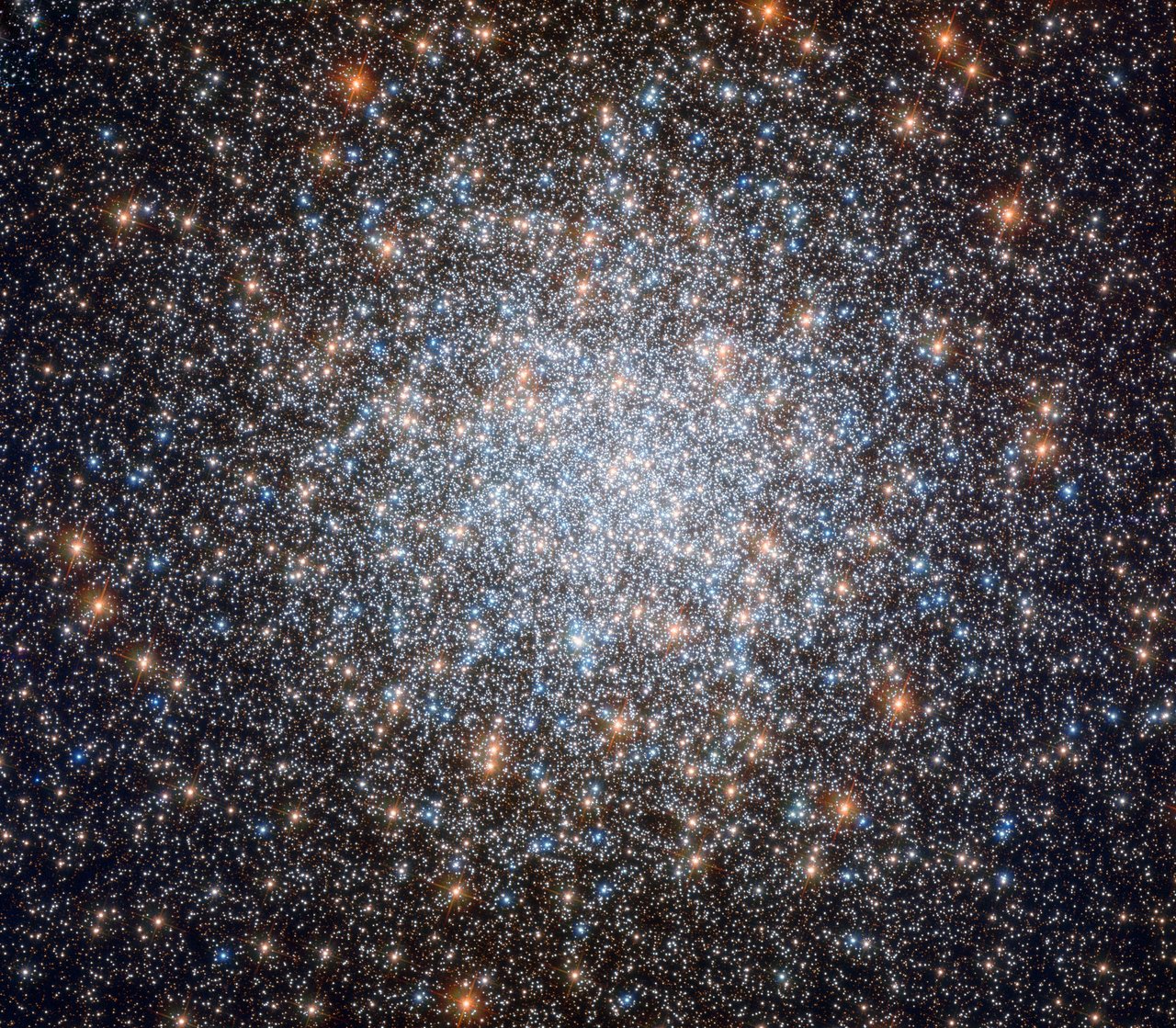
Globular clusters are groups of thousands of stars which are tightly bound together by gravity, moving together as one object through the night sky. And Hubble has shared an image of one of the most famous and most admired globular clusters, Messier 3. It is widely considered the most beautiful of all such clusters because of its density and the variety of stars that can be seen within it.
Messier 3 is located 34,000 light-years from Earth, in the northern constellation of Canes Venatici or the “hunting dogs.” The cluster contains an incredible number of stars — around half a million in total — and is ancient, clocking in at around eight billion years old. This makes it one of the largest globular clusters to have been discovered.
As well as being beautiful, there are two astronomical features which make Messier 3 noteworthy. Firstly, it has a high proportion of variable stars, which are stars that are brighter at some times and dimmer at others. This variation can be caused either by intrinsic variables, where the light given off by the star actually changes because the star grows in size or shrinks over time, or by extrinsic variables, which is where the brightness of a star appears to change because of objects in between the star and Earth which affect how much light reaches us, such as when a star has a companion star which sometimes eclipses it.
In the case of Messier 3, the stars are variable due to intrinsic factors, as they are a type of star called an RR Lyrae variable. So far, scientists have found 274 variable stars in Messier 3, which is by far the most of this type of star to be found in any cluster.
The second feature of interest in Messier 3 is the high number of the charmingly named blue stragglers. These bright blue dots, clearly visible in the image, are stars which appear to be younger (and therefore bluer and brighter) than the stars around them.
But we know that the stars in a globular cluster are the same age, so the blueness of these particular stars is something of a puzzle. Astronomers believe the blue stragglers may be in the process of acquiring more mass, such as by absorbing matter from other nearby stars, which would make them more massive and therefore make them appear more blue.



